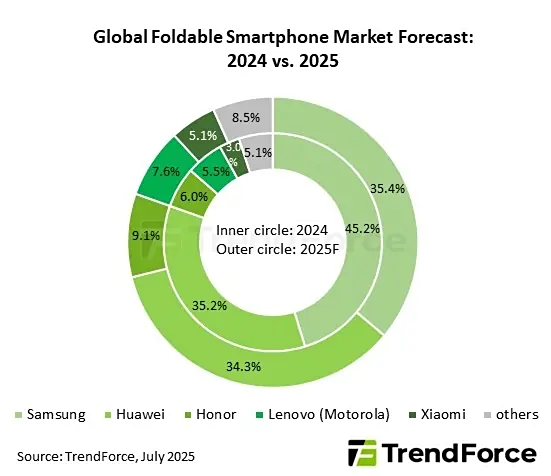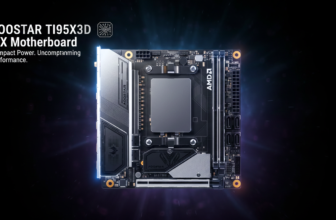TrendForce’s latest report projects that global foldable smartphone shipments will reach 19.8 million units in 2025. This represents a stable market penetration rate of 1.6%, matching 2024 figures. While the growth rate has slowed compared to earlier years, foldable phones are becoming a core part of mid-to-high-end smartphone portfolios as manufacturers enhance designs and expand product lines.
The report highlights ongoing price reductions and technical improvements, which are expected to prepare the market for stronger demand in 2026. Manufacturers are focusing on addressing consumer concerns over durability, screen creases, and pricing, aiming to bring foldable devices closer to mainstream acceptance.

Samsung continues to lead the global foldable market with its Galaxy Z Fold 7. The latest model features an upgraded hinge design, a less noticeable display crease, and a thinner, lighter chassis. However, Samsung’s market share is expected to drop from 45.2% in 2024 to 35.4% in 2025 as competition increases.
Huawei remains strong in the Chinese market and is forecast to secure a 34.3% global market share. Honor and Motorola (Lenovo) are also gaining momentum, with projected shares rising from 6.0% and 5.5% to 9.1% and 7.6% respectively. Xiaomi has entered the compact foldable segment with its MIX Flip series, and its share could grow from 3.0% in 2024 to 5.1% in 2025. OPPO, vivo, and other brands combined are expected to account for 8.5% of shipments, showing an increasingly competitive landscape.
Despite these developments, foldable phone adoption remains limited. Many consumers still prefer traditional flagship models, citing concerns over foldable screen durability, crease visibility, and premium pricing.
TrendForce points to 2026 as a possible turning point. Apple is rumored to launch its first foldable iPhone next year, which could spark greater interest in foldable devices among high-end users and accelerate adoption. Manufacturers are already preparing portfolios that range from entry-level to premium foldables to capitalize on this potential shift.
As foldable smartphones move beyond niche status, the segment is expected to play a larger role in driving innovation in the global smartphone market. Continued improvements in technology and pricing could set the stage for broader mainstream adoption in the coming years.







